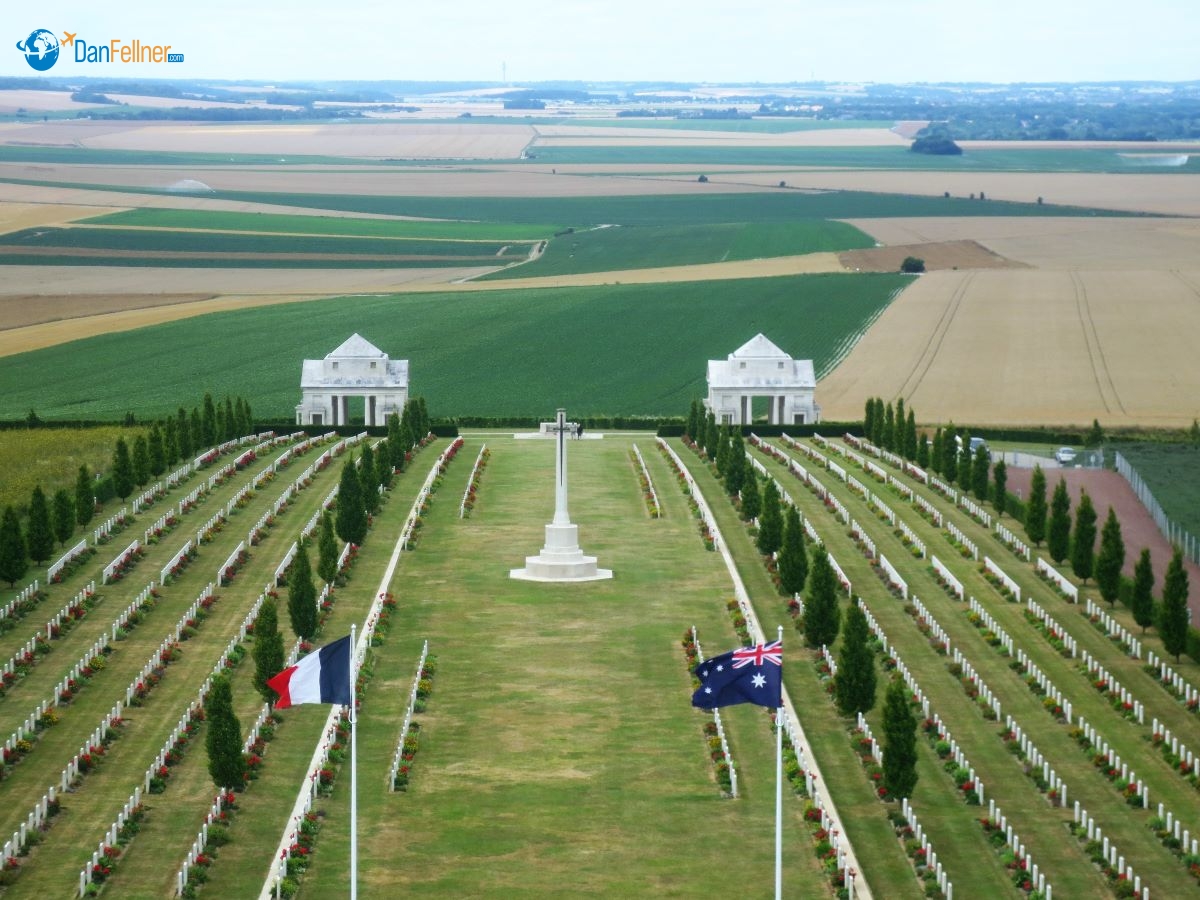Site of savage World War I battle in Somme moving part of cruise through Normandy
The Arizona Republic — August 19, 2018
VILLERS-BRETONNEUX, France – For such a stunningly beautiful part of the world, it’s hard to fathom the horrific carnage that took place here more than 100 years ago on the Western Front during World War I.
Amidst the rolling hills in Normandy bearing golden wheat fields, apple orchards and tiny medieval villages, are the remnants of what’s been called by historians the bloodiest battle in the bloodiest war ever fought by mankind.
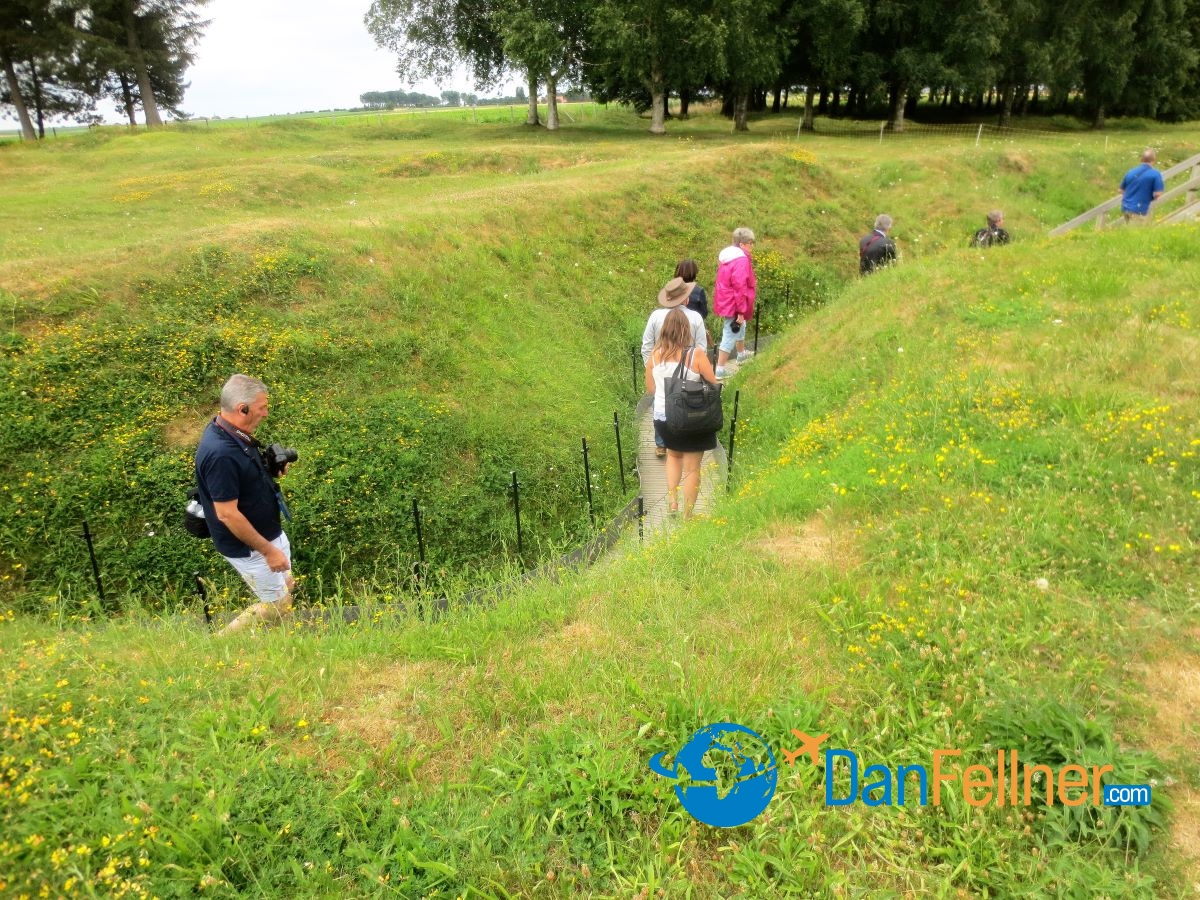
Visitors walk through the trenches at the Somme battlefield in northern France.
For more than four-and-a-half months beginning July 1, 1916, Allied troops, led by soldiers from France, the United Kingdom, Canada and Australia, fought the Germans in the Somme region of northern France spanning both sides of the Seine River.
My visit to the Somme battlefields was one of the most impactful and emotional days on a week-and-a-half cruise on the Seine River on the Scenic Gem that started and ended in Paris. Like many Americans, I was reasonably well-informed about the D-Day invasion in World War II and had previously visited the Normandy landing beaches.
But I knew far less about the first World War, which was idealistically – and naively — referred to at the time as the “war to end all wars.”
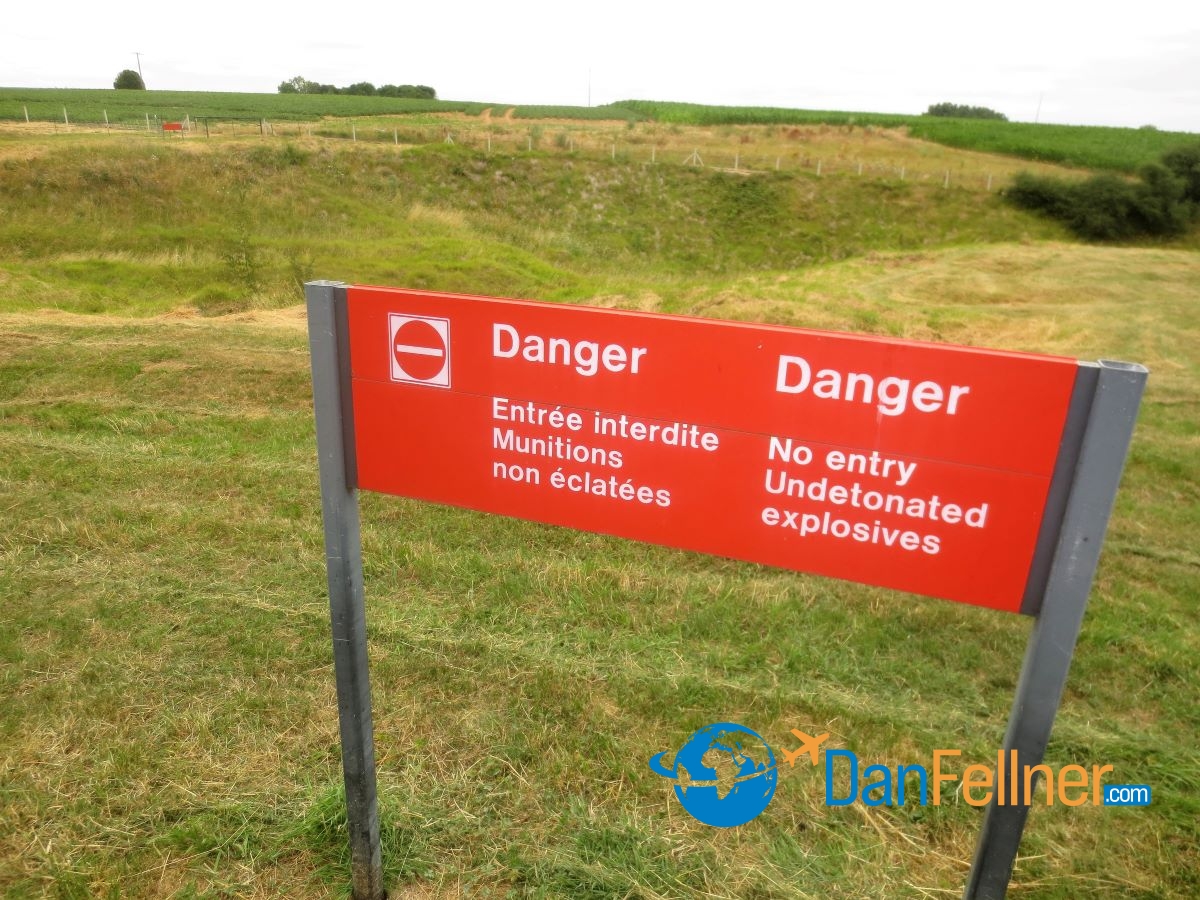
Unexploded shells are still being found in the Somme region of France, remnants of a battle fought more than 100 years ago.
The battle of the Somme was mostly fought under horrific conditions in trenches by armies just a few yards apart, separated by “no-man’s land.” Venturing outside of a seven-foot-deep trench on the front lines often meant instant death. The Somme also marked the first use of tanks on a battlefield, although the British armored vehicles used at the time were unreliable and yielded only mixed results.
“In the trenches, it was almost impossible to reach the other trench without being killed,” says Nathalie Lefevre,” a history teacher in Normandy who came onboard the Scenic Gem to give a lecture about World War I the day before the ship’s 86 passengers visited the Somme. “And this is why the battle was so deadly. Plus, the new weapons that were invented made all battles during World War I very bloody.”

The Scenic Gem docked on the Seine River in Honfleur, France.
By the time the battle of the Somme ended on Nov. 18, 1916, more than one million men were killed or wounded. In comparison, that’s more than double the causalities suffered in the World War II D-Day invasion and the entire battle of Normandy in June 1944.
There are numerous military cemeteries, many of which contain the graves of soldiers who were never identified, scattered throughout the Somme. Even though the battle was fought more than a century ago, the trenches are still visible and some have been paved so that visitors can walk through them. The area still contains undetonated shells from the war and after a hard rain, it’s not uncommon for locals to spot the remains of soldiers in the mud, whose bodies were never recovered.

The Normandy American Cemetery near Omaha Beach in Normandy, France.
While Allied forces are considered the victors in the battle of the Somme, they gained little territory in the process. But the battle seriously weakened the German army. America entered the war a year later and its fresh troops helped the Allies gain the upper hand, ultimately culminating with Germany’s surrender in 1918.
The cruise also included a visit to the moving American military cemetery overlooking Omaha Beach on France’s northern coast, site of the D-Day invasion which turned the tide turned during World War II and led to Germany’s surrender to the Allies in 1945. The cemetery contains the remains of more than 9,000 Americans.
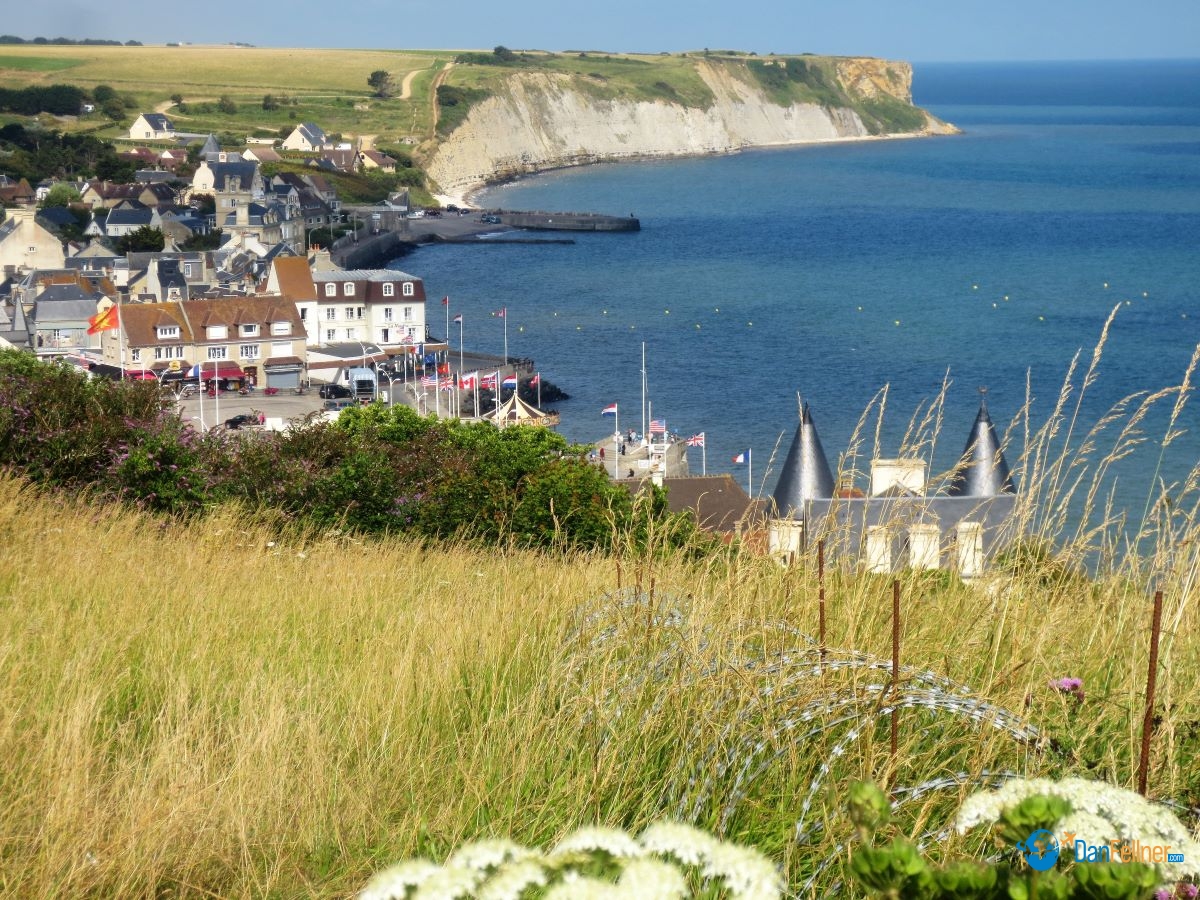
The village of Arromanches in Normandy, where battles were fought during the Allied invasion of France in 1944.
In stark contrast to the grim reminders of the first two world wars, the cruise also included visits to some of the most beautiful and tranquil settings in Europe, including the famous Giverny Gardens on the right bank of the Seine. The famous Impressionist painter Claude Monet lived in Giverny and we visited the water-lily ponds that were the focus of much of Monet’s work during the latter part of his life.
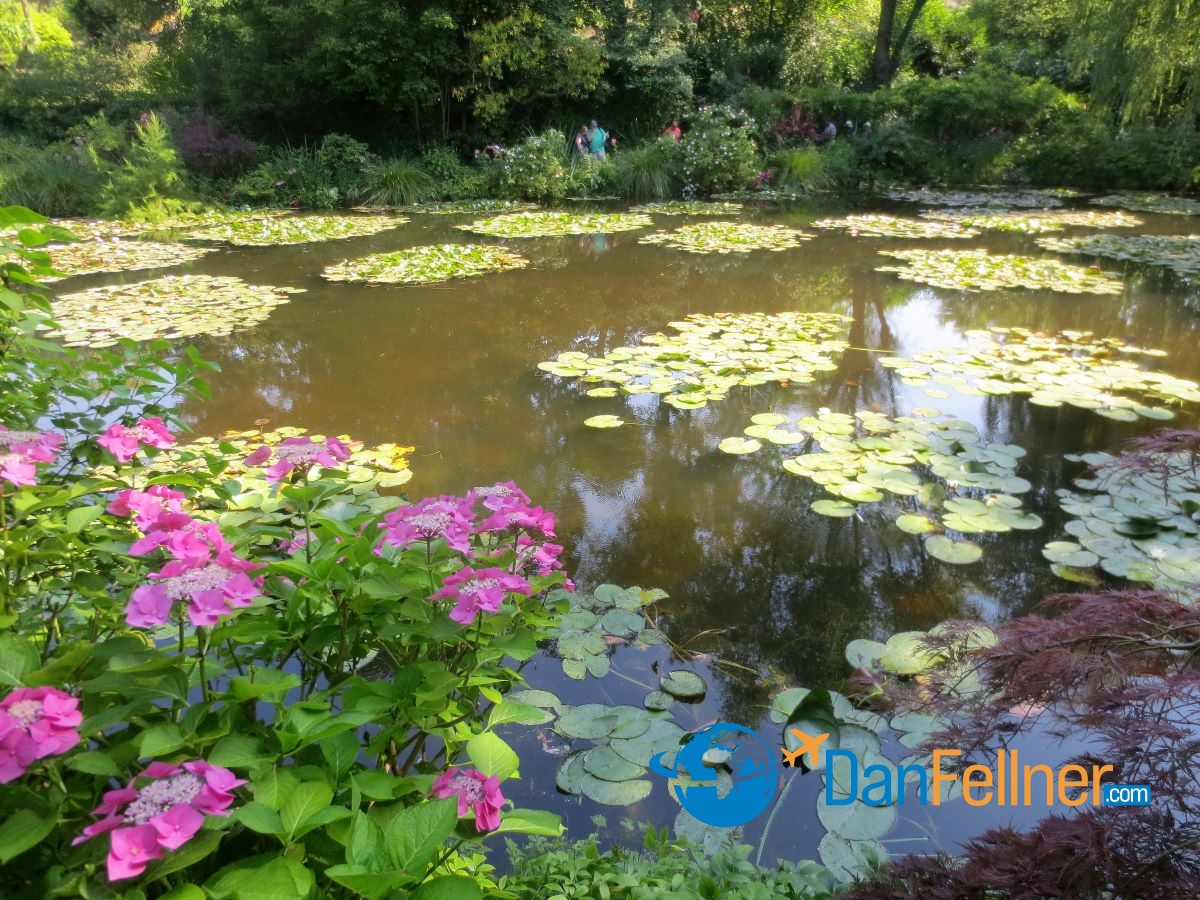
The famous water lilies in Giverny that Claude Monet painted during the last 30 years of his life.
We spent a day in Deauville, a seaside resort on the English Channel known as a playground for French high society. Deauville features numerous half-timbered buildings, a trademark of Normandy’s traditional architecture.
Our visit happened to coincide with France’s Bastille Day, which commemorates the turning point of the French Revolution in 1789. We were treated to magnificent fireworks show from the top deck of the Scenic Gem while docked in a small village on the Seine.
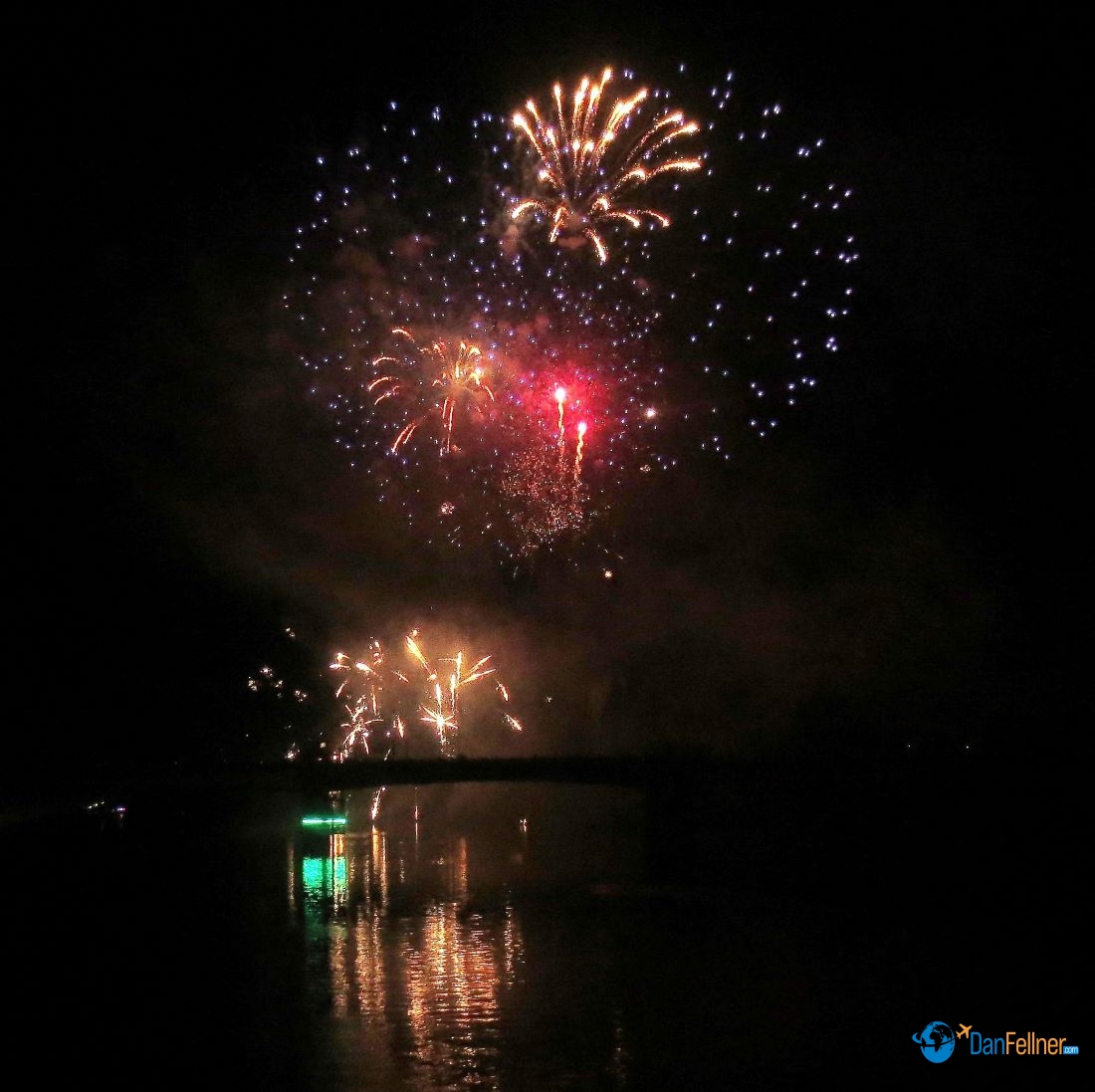
Fireworks show over the Seine River celebrating France’s Bastille Day, which commemorates the turning point of the French Revolution in 1789.
We also enjoyed a unique light show at the Gothic cathedral in Rouen, the administrative capital and largest city in Normandy. Consecrated in 1063 in the presence of William the Conqueror, the cathedral was the tallest building in the world for a several-year period in the late 1800s.
The light show chronicles the church’s tumultuous history, including Viking invasions, fires and lightning strikes. It’s just a 10-minute walk from where the river ships dock and is offered free after dark during the summer months (see video shot by the author: Rouen cathedral light show).

The light show at the historic Rouen Cathedral in Normandy, France.
All told, we sailed about 400 miles roundtrip on the winding Seine from Paris to the picturesque port of Honfleur near the English Channel, leisurely meandering past numerous castles, cathedrals and chateaus.
Built in 2014 specifically for the Seine, the Scenic Gem is one of only a handful of the 19 ships now sailing the Seine that can navigate the river’s numerous locks and sharp turns and make it all the way to Honfleur. Cruising the Seine is a relaxing way to explore northern France and by eating meals on the ship, you’re immune from the exorbitant costs of French restaurants.
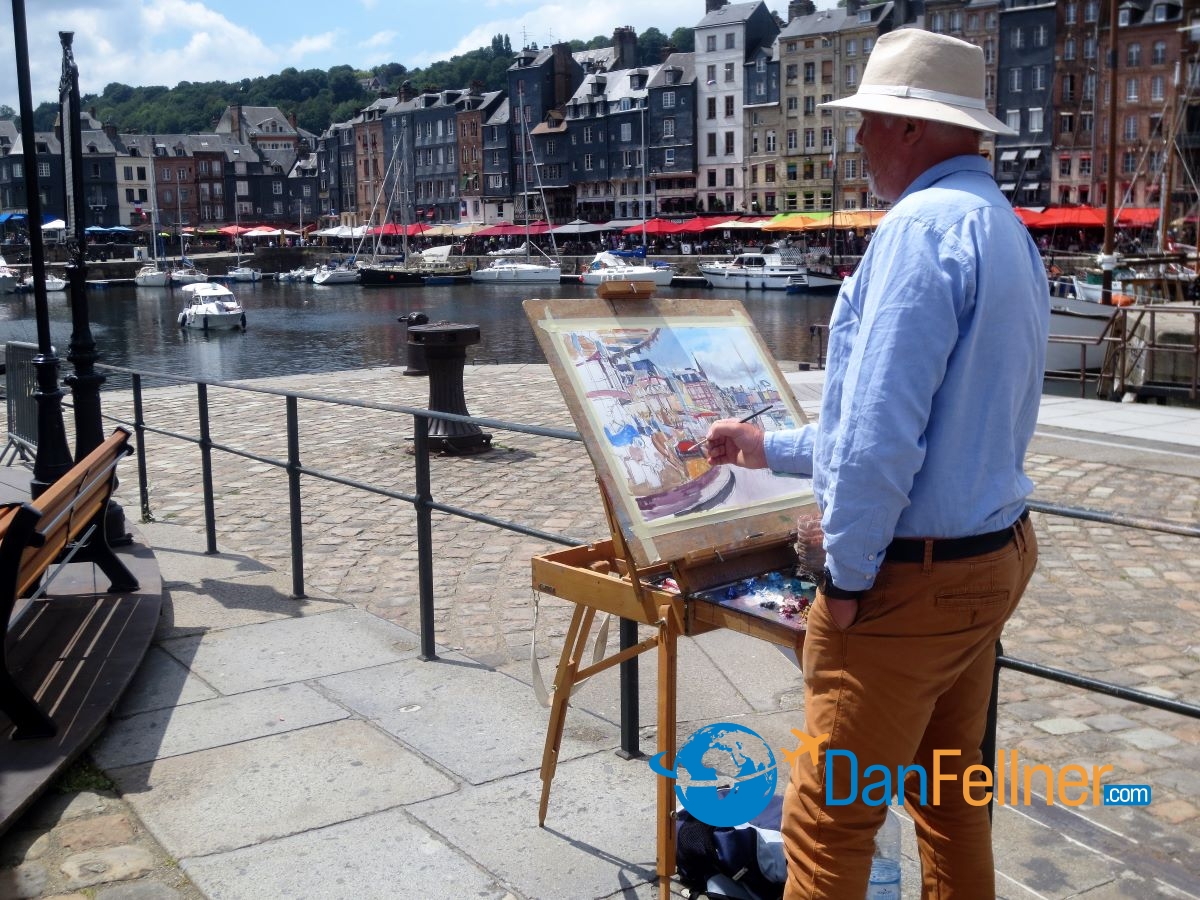
An artist paints the picturesque harbor in Honfleur, France.
The weather during the trip was spectacular – sunny most days with highs in the 80s. The only exception was our day spent at the Somme battlefields, when it was cold, windy and rainy. It somehow seemed fitting given the horrible loss of life that took place in northern France more than a century ago for so many soldiers from all over of the world.
“Many of the men who fought were volunteers, so they chose to cross the world and come to our country and help us and the other Allies win the war,” says Lefevre. “This is always very impressive for me.”
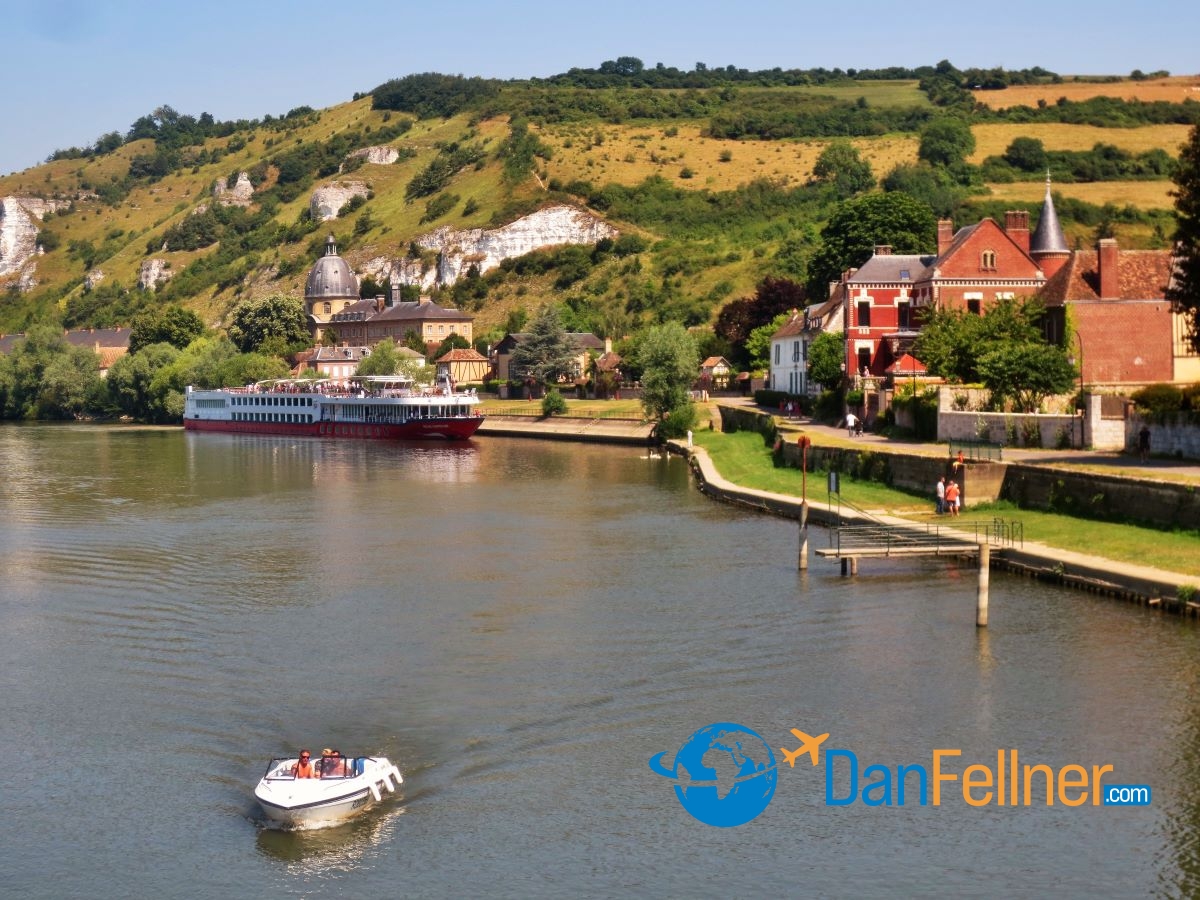
The town of Les Andelys on the Seine River in the Upper Normandy region of France.
© 2018 Dan Fellner

